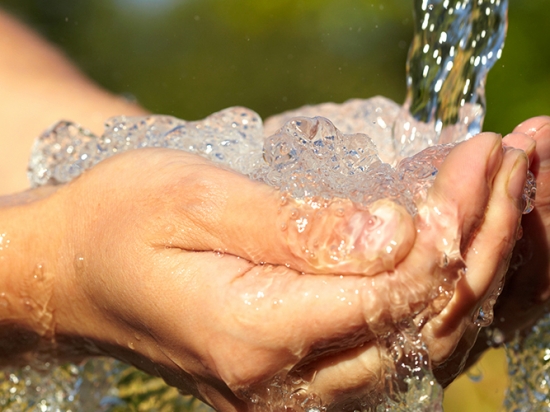Understanding water treatment, cycle and consumption

Trust Your Water gives a better look on the cycle and the consumption of water, and why you may need a water treatment system.
Nearly 326 million trillion gallons of water cover more than 70 percent of the Earth, making it the most common element on the planet. Water is the only resource found naturally as a solid, liquid and gas. The atmosphere carries 40 trillion gallons of water across the country and drops
40 percent of its moisture as precipitation every day. All of this water helps regulate the temperature and supports life on Earth.
Water cycle
The water that people drink today is essentially the same water that the dinosaurs drank 245 million years ago. New water does not exist naturally; it is recycled, not created. Our water supply today
is affected by our ancestors’ actions, just as our actions will affect the water of future generations, because it is all the same. There will never be more or less water on Earth than there is today.
Just 1 percent of the Earth’s water is freshwater that is suitable for drinking; the other 99 percent is saltwater or inaccessible, frozen away in polar ice caps. More freshwater exists underground than in lakes and rivers on the planet’s surface. In fact, just 0.036 percent of freshwater comes from surface water drinking sources.
Water consumption in USA
In the United States, 38 billion gallons of water are processed by 54,000 public water systems every day. The United States and Canada have about one million miles of pipelines, enough to circle the Earth 40 times. Despite the extensive distribution system, nearly 80 million U.S. residents depend on unregulated water, such as water that comes from a well. Americans drill approximately 100 new water wells every hour, or 876,000 per year.
In 2000, Americans consumed 346,000 million gallons of freshwater per day. The nation’s three most populated states, California, Texas and New York, consumed nearly one-third of the country’s publicly supplied water; that’s more than 42 trillion gallons a year.
Each day the average American uses more than 100 gallons of water, the equivalent of filling up a standard car’s gas tank more than seven times. The most common use is flushing the toilet, followed by doing the laundry and showering. Overall, 74 percent of home water is used in the bathroom, 21 percent for laundry or cleaning, and 5 percent in the kitchen, including water that people drink and cook with.
Aside from its obvious domestic uses, water plays a vital role in the production of many goods that touch everyone’s daily lives. Average domestic automobiles, tires and all, require 39,000 gallons to produce. Jeans require 1,800 gallons to produce and cotton shirts take about 400. Each Sunday paper requires about 150 gallons of water to make.
Many favorite foods require more water to produce than one might think. A dairy cow must drink four gallons of water for each gallon of milk she gives. One orange takes 13.8 gallons of water to produce; watermelons need 100 gallons. One loaf of bread requires 150 gallons, and two scrambled eggs take more than 240 gallons of water.
Home water treatment systems
Although the National Academy of Engineers considers the water treatment process used to mass- produce drinking water the fourth greatest engineering achievement of the 20th century, many Americans are still concerned about the safety of their tap water. In fact, one in ve U.S. residents report they will drink only bottled water—even though bottled water has not been proven to be any safer or better tasting than treated or untreated tap water. While that may sound extremist, as bottled water is less regulated than tap, the public’s concerns are not unfounded. From 1991 to 2002, there was an annual average of 17 drinking water contaminant outbreaks every year, just six less than the yearly average from 1920 to 1930. Scientific debates on appropriate water standards, coupled with the knowledge that more populated environments promote a greater number of waterborne health concerns, have prompted many families to turn to home water treatment systems to ensure they consume the safest and highest quality water possible.
Our home water treatment systems provide customized solutions to combat the specific problems encountered by individual users. Whether homeowners seek filtered water, softened water or a combination of both, our home water treatment systems provide logical solutions. Every system is non-electric and uses up to 70 percent less salt and water than other water treatment systems. To ensure drinking water safety, we offers reverse osmosis filtration systems, an EPA- recommended solution to most effectively remove a larger number of contaminants. Additionally, our Drinking Water Station is able to adapt as homeowners’ water needs evolve to ensure the highest quality drinking water—today and in the future.
Contact Trust Your Water for more information on our home water treatment systems!